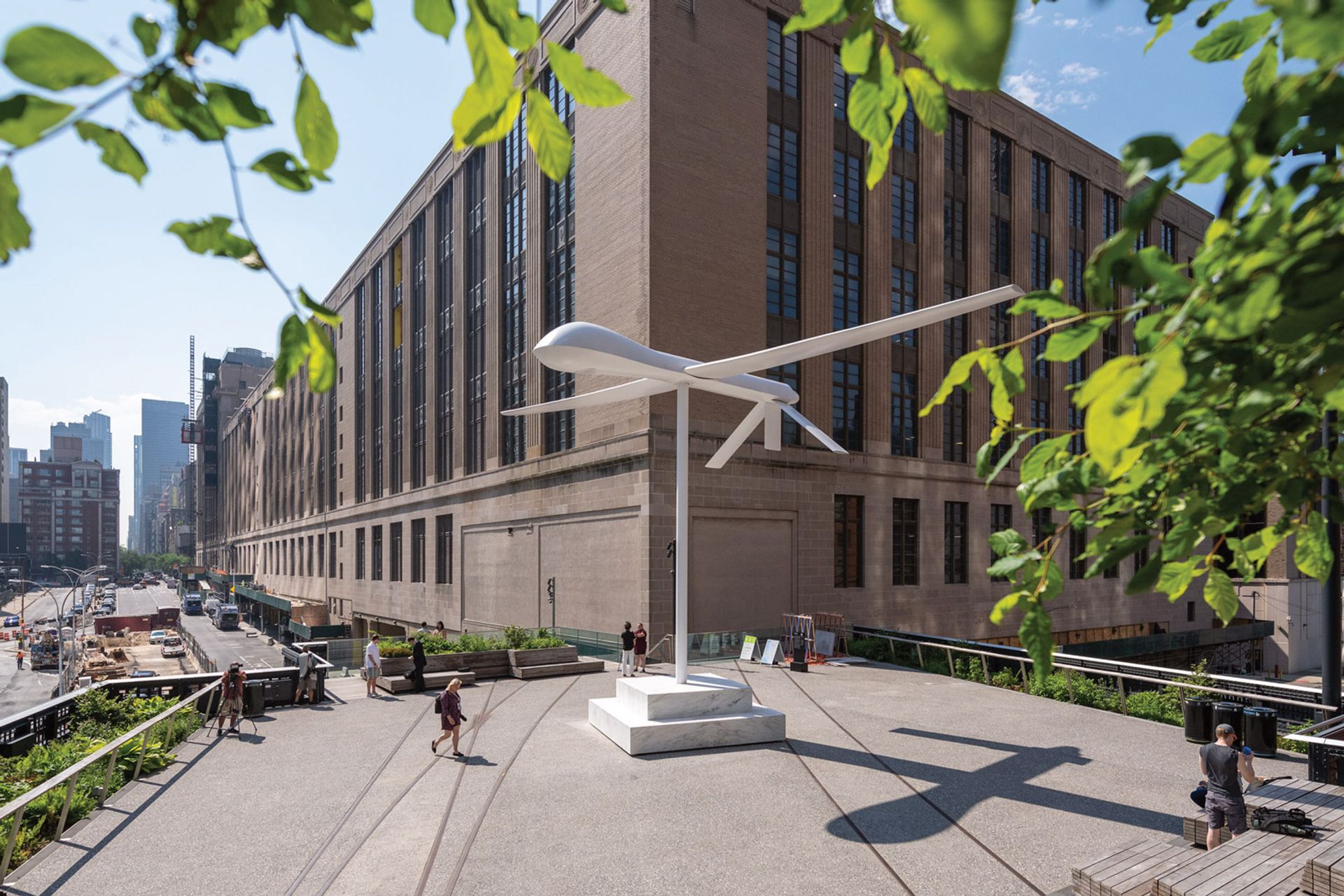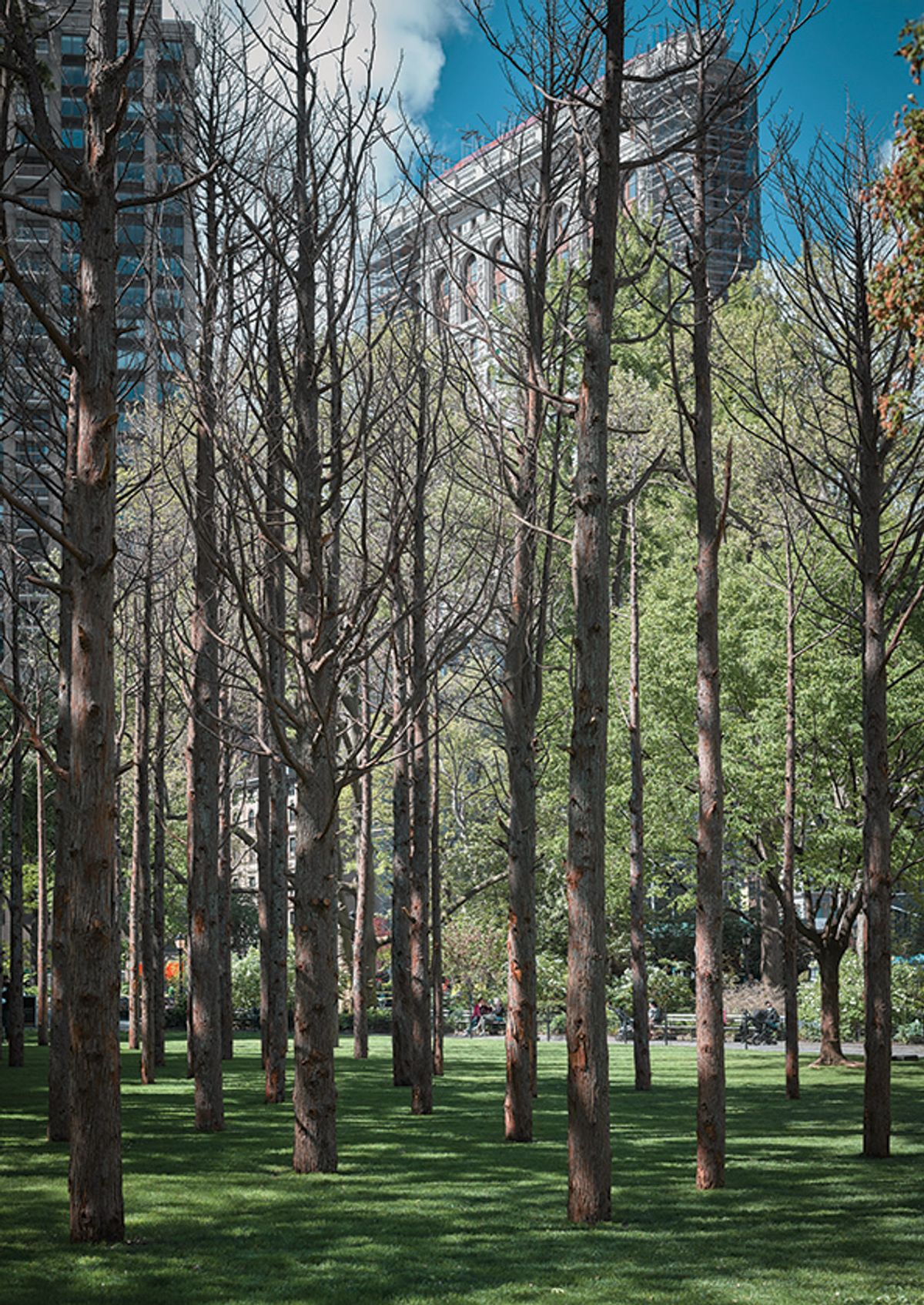Remember when contemporary public art in New York was kind of lame? When certain privately funded monstrosities, like Thomas Heatherwick’s shiny Vessel in Hudson Yards, were completely at odds with their surroundings? Nor were they in any sense political. One exception is Fritz Koenig’s 9/11-battered Sphere at the World Trade Center; another treasure was Deborah Kass’s OY/YO sign on the Brooklyn waterfront. (It also made for a great T-shirt.) In the past couple of years, public art—largely thanks to commissions from non-profits—have not just dressed up the cityscape. They have also grown a conscience.
Maya Lin brings Madison Square Park an eco-conscious gift that is as stark as it is poignant. Unlike previous commissions for the park, Lin made her installation entirely of natural materials, namely 49 white cedars, a species endangers by logging and extreme weather. Just because they’re dead doesn’t mean they aren’t magnificent. Salvaged from New Jersey’s Pine Barrens, where they were due for clearing, Lin planted—or rather sunk—each 40ft tall, reddish-brown trunk into one of the lawns, where they look absolutely spectral among the park’s leafy greens. In late afternoon, when shadows are longest, they become doubly skeletal.
In fact, they are grave markers for varieties of deciduous trees that, long ago, grew in Manhattan and have since died out, like New York nightlife. White cedars are a species endangered by logging and extreme weather. Thus, her project is a cautionary tale that also represents an initiative to plant 1,000 living trees and shrubs around town, thereby offering a sense of optimism enhanced by a smartphone-enabled soundscape of birdsong that used to be a lot more common.

Sam Durant’s Untitled (drone), a commission for the High Line Plinth Photo by Timothy Schenck. Courtesy the High Line.
By contrast, eerie silence surrounds Sam Durant’s Untitled (drone), a commission for the High Line Plinth that was selected for year-long display by popular vote. Durant’s art, like Lin’s, gives a marked visibility to upsetting objects or issues so common that we have ceased to notice them. Drones have peaceable functions, heaven knows, but it is their development and use by the military that concerns Durant. Drones conduct war by remote. They surveil innocents as well as combatants. They kill.
Durant’s white, fibreglass predator sits atop a 25ft pole above the viewing platform on Tenth Avenue at 30th Street, which is not all that far from the black stealth bomber on the deck of the Intrepid Museum, its kissing cousin. It has the same shape and is equally denuded of any outward sign of threat. No armaments. No cameras, or other technology. Just the unmistakable image of a force beyond our control.
In other words, it is very smart art that can be taken several ways at once. “Culture always has been impeded by war and destruction,” Durant said, on the day of the drone’s unveiling in June. “It’s meant to spark a conversation about the military/real-estate complex, and add a Bladerunner dimension to Hudson Yards. People know that drones kill other people in faraway places, yet some think it looks like a cartoon. But I like that the work can oscillate between these readings.”
The armed version, he said, is camouflaged in grey. His is white to make it harder to miss. “What excited us about this sculpture was how timely and relevant it is,” said the High Line Art curator Cecilia Alemani, who contrasted it with the ode to the enduring architecture of Black womanhood that was Brick House, Simone Leigh’s commission from last year. "With the drone, we wanted to support an artist who has dedicated two decades of his artistic practice to socially engaged projects dealing with the role of monuments and memorials in our cities, with issues connected to mass incarceration and capital punishment, and with warfare and surveillance.”
It just goes to show: in a pandemic, art cannot afford to be subtle.


